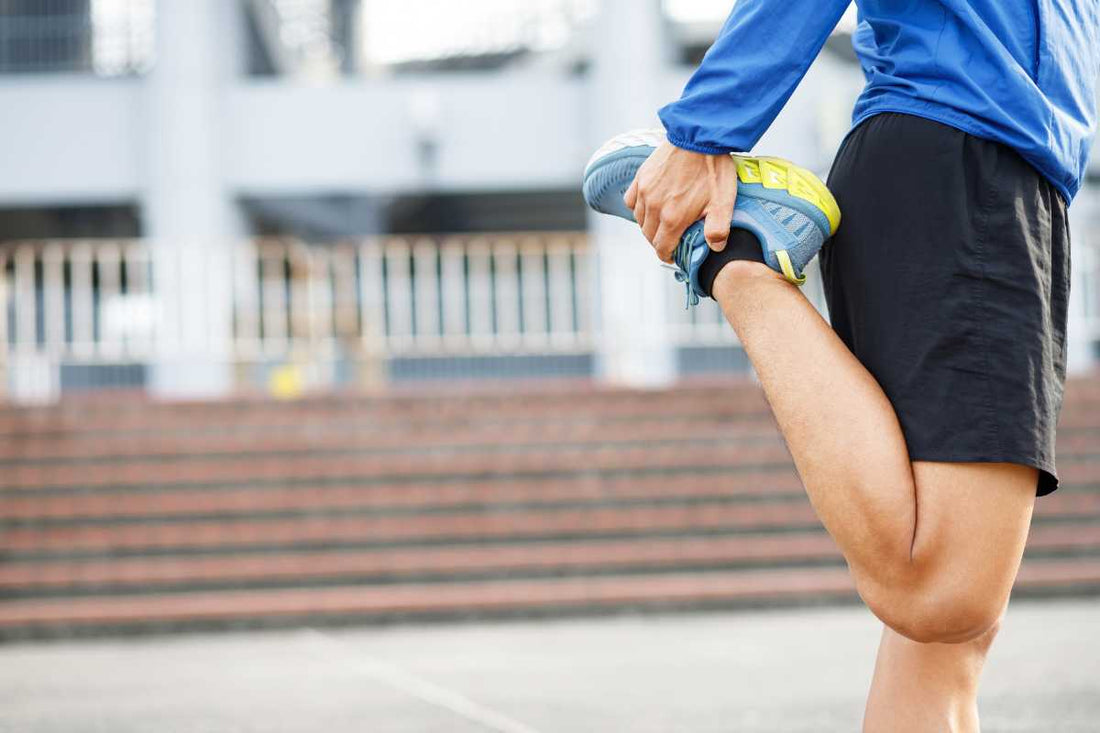Are you feeling tired, stiff, and stressed? It's time to discover the incredible benefits of daily stretching. Whether you're an athlete looking to improve performance, an office worker seeking relief from back pain, or simply someone who wants more energy and flexibility, incorporating a stretching routine into your daily life can work wonders for your body and mind.
Stretching offers a multitude of benefits beyond just increasing flexibility. It helps improve blood circulation, enhances posture, relieves muscle tension, and reduces the risk of injuries. Even better, stretching has been proven to promote relaxation and reduce stress levels, making it an effective tool for improving mental wellbeing.
By devoting just a few minutes each day to stretching, you can experience a new level of physical and mental rejuvenation. From simple stretches you can do in bed to more challenging poses for advanced practitioners, there are endless possibilities to explore. So, grab a mat or find a quiet space, and begin your journey towards a healthier, more balanced you.
Start your day with a refreshing stretch, and discover how this simple act can transform your body and mind. Get ready to feel more vibrant, focused, and ready to take on whatever challenges come your way. Stretch your way to a healthier and happier you.
How stretching benefits the body
Stretching offers a multitude of benefits beyond just increasing flexibility. When you stretch, you are actively engaging your muscles, tendons, and joints, which helps improve blood circulation throughout your body. This increased circulation delivers oxygen and essential nutrients to your muscles, promoting faster recovery after exercise and reducing muscle soreness.
Furthermore, regular stretching can enhance your posture by lengthening tight muscles that pull areas of your body out of alignment. By stretching your chest, shoulders, and hip flexors, you can counteract the effects of sitting for prolonged periods, which can lead to rounded shoulders and a hunched back.
In addition to these physical benefits, stretching also helps relieve muscle tension. Whether you're experiencing tightness from a strenuous workout or the stress of everyday life, stretching can provide immediate relief. It helps loosen up tight muscles, reducing discomfort and promoting a sense of relaxation.

How stretching benefits the mind
Beyond its physical benefits, stretching has been proven to have a positive impact on mental wellbeing. When you stretch, you activate your parasympathetic nervous system, which is responsible for the body's rest-and-digest response. This activation helps promote relaxation and reduce stress levels.
Furthermore, stretching increases the production of endorphins, which are the brain's natural feel-good chemicals. These endorphins help elevate your mood and reduce feelings of anxiety and depression. By incorporating stretching into your daily routine, you can create a calming ritual that allows you to escape from the demands of the day and focus on yourself.
The science behind stretching and its effects on the body and mind
The benefits of stretching go beyond anecdotal evidence; they are backed by scientific research. When you stretch, your muscles elongate, which increases the flow of blood and nutrients to these areas. This improved circulation helps reduce muscle fatigue and soreness, allowing you to perform better in physical activities.
Stretching also activates sensory receptors in your muscles, tendons, and joints, sending signals to your brain to relax. This response helps alleviate muscle tension and release stress. Moreover, stretching increases the production of endorphins, as mentioned earlier, which have a direct impact on your mood and mental wellbeing.
Additionally, studies have shown that regular stretching can improve sleep quality. By engaging in a stretching routine before bed, you can relax your body and mind, making it easier to fall asleep and experience a more restful night's rest.

Different types of stretching techniques
There are various stretching techniques that cater to different goals and preferences. Here are some of the most common types of stretching:
1. Static stretching: This involves stretching a muscle to its furthest point and holding the position for a certain period. Static stretching is great for increasing flexibility and can be done both before and after exercise.
2. Dynamic stretching: This type of stretching involves moving your muscles and joints through a full range of motion. Dynamic stretches are typically performed as part of a warm-up routine before physical activity.
3. Active stretching: Active stretching involves stretching a muscle by actively contracting the opposing muscle group. This type of stretching is excellent for improving flexibility and can be done without any external assistance.
4. Passive stretching: In passive stretching, you rely on external assistance, such as a partner or stretching equipment, to help you achieve a deeper stretch. This technique allows you to target specific muscle groups more effectively.
5. Yoga and Pilates: These practices incorporate a combination of stretching, strength training, and mindfulness. They offer a holistic approach to physical and mental wellbeing, combining flexibility, balance, and relaxation.
Incorporating stretching into your daily routine
Now that you understand the incredible benefits of stretching, it's time to incorporate it into your daily routine. Here are some tips to help you get started:
1. Start small: Begin with just a few minutes of stretching each day and gradually increase the duration as your body adapts. Consistency is key, so aim for at least 10-15 minutes of stretching daily.
2. Choose activities you enjoy: Find stretching exercises or activities that you genuinely enjoy. This will make it easier to stick to your routine and make it a pleasurable experience.
3. Create a dedicated space: Designate a quiet and comfortable space in your home where you can stretch without distractions. This will help create a relaxing environment that promotes focus and mindfulness.
4. Listen to your body: Pay attention to any discomfort or pain while stretching. Stretching should never be painful; it should feel like a gentle pull or tension. If you experience any sharp or intense pain, consult a healthcare professional.
5. Combine stretching with other activities: Consider incorporating stretching into your existing exercise routine or pairing it with activities like meditation or deep breathing exercises. This will allow you to maximize the overall benefits of your self-care routine.

Stretching for specific purposes - flexibility, stress relief, injury prevention, etc.
Stretching can be customized to meet specific goals or address particular concerns. Here are some examples:
1. Flexibility: If your main goal is to improve flexibility, focus on exercises that target the major muscle groups. Hold each stretch for 20-30 seconds and repeat them at least two to three times.
2. Stress relief: To use stretching as a tool for stress relief, incorporate deep breathing and mindfulness techniques into your stretching routine. This will help you relax both your body and mind.
3. Injury prevention: Stretching before and after exercise can help prevent injuries by preparing your muscles for the activity and aiding in their recovery afterward. Focus on dynamic stretching and include specific stretches for the muscles you will be using during your workout.
4. Posture improvement: If you spend extended periods sitting or have poor posture, incorporate stretches that target the muscles responsible for maintaining proper alignment, such as the chest, shoulders, and hip flexors.
Common mistakes to avoid when stretching
While stretching is generally safe and beneficial, it's essential to avoid common mistakes that can lead to injury or ineffective results. Here are some mistakes to watch out for:
1. Bouncing: Avoid bouncing or using jerky movements while stretching. This can strain your muscles and cause injury. Instead, focus on slow and controlled movements.
2. Overstretching: Stretching should never be painful. If you push your body too far, you risk injuring yourself. Take it slow and gradually increase your range of motion.
3. Neglecting warm-up: Stretching cold muscles can lead to injury. Always warm up your body with light aerobic activity, such as walking or jogging, before stretching.
4. Forgetting to breathe: Breathing is crucial during stretching. Take slow, deep breaths as you stretch to oxygenate your muscles and promote relaxation.

Stretching equipment and accessories
While stretching can be done with little to no equipment, there are some accessories that can enhance your stretching routine. Here are a few options:
1. Yoga mat: A yoga mat provides a comfortable and non-slip surface for your stretching exercises. It also helps define your dedicated stretching space.
2. Resistance bands: These bands offer additional resistance during stretches, allowing you to deepen the stretch and target specific muscle groups.
3. Foam roller: Foam rollers are excellent for self-myofascial release, which helps relieve muscle tension and improve flexibility. They can be used before or after stretching.
4. Stretching strap: A stretching strap allows you to deepen your stretches and reach muscles that are difficult to target on your own.
Conclusion - making stretching a part of your self-care routine
Incorporating daily stretching into your life can have incredible benefits for both your body and mind. From increased flexibility and improved posture to stress relief and injury prevention, stretching offers a holistic approach to overall wellbeing.
By devoting just a few minutes each day to stretching, you can experience a new level of physical and mental rejuvenation. So, grab a mat or find a quiet space, and begin your journey towards a healthier, more balanced you. Start your day with a refreshing stretch, and discover how this simple act can transform your body and mind. Get ready to feel more vibrant, focused, and ready to take on whatever challenges come your way. Stretch your way to a healthier and happier you.
Hunghee Ancestral Energy is packed with the most bioavailable nutrients for peak performance and adventure - nutrition as nature intended. Whether you are a professional athlete, outdoor adventurer, or just hangry, Hunghee’s on-the-go 1oz superfood energy packs make it easy and convenient to ensure sustained energy for any activity. Made with animal-based nutrients including organic grass-fed ghee, local raw honey, and ancient sea salt, Hunghee provides a smooth release of energy. So next time you hit the trail or prepare for a long day, try a Hunghee!
Disclaimer: This content is for informational purposes only and is not intended as medical advice. Please consult your healthcare provider for advice about a specific medical condition or before starting any new fitness or nutritional program.

